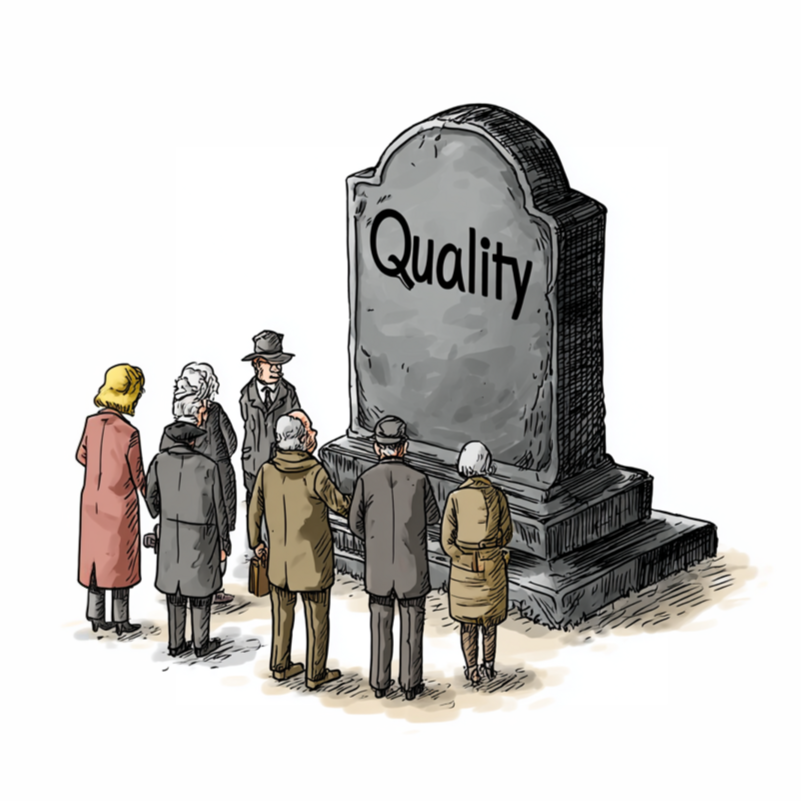The Lip Service Problem: When “Support” Means Silence
We’ve all been there. Leadership stands up in an all-hands and says, “Quality is our top priority.” There’s a nod. Maybe even a round of applause. And then… nothing.
No changes to resourcing. No new metrics. No shift in incentives. And absolutely no change in behavior.
This is what I call the lip service death spiral:
- Step 1: Execs declare quality important.
- Step 2: Teams wait for signals to change how they work.
- Step 3: Nothing happens.
- Step 4: Teams go back to optimizing for delivery speed.
- Step 5: Quality quietly dies.
Here’s the uncomfortable truth: most leadership teams think endorsing quality is enough. But saying “quality matters” without embodying, enabling, or enforcing it is like shouting “defense!” from the sidelines while your team gets steamrolled.
If quality starts at the top, then so does the rot.
Metrics, Models, and Misalignment: Why Good Intentions Fail
Let’s be honest. Quality isn’t mysterious. It just requires attention, accountability, and investment. Yet most organizations suffer from one or more of these blind spots:
- No measurable definition of quality. Ask ten leaders what “quality” means, get ten different answers.
- No one owns it. Engineering thinks it’s product’s job. Product thinks it’s QA. QA thinks it’s a lost cause.
- No feedback loop. Post-mortems happen. But nothing changes.
Want to know how seriously a company takes quality?
Don’t look at the mission statement. Look at the backlog.
- Are bug fixes prioritized?
- Are teams measured on incident reduction?
- Does anyone track the cost of rework?
If quality isn’t resourced, tracked, and rewarded — it won’t happen. It’s not sabotage. It’s entropy. In fast-moving environments, quality atrophies unless it’s deliberately sustained.
And when leadership fails to model what “good” looks like, they accidentally normalize the bad.
How to Stop Killing Quality: Start Leading It
Want to fix this? You can. But it starts by getting brutally honest:
- Ask: Do we really value quality? Or do we just say we do? If you’re not investing in it, you’re not valuing it.
- Set clear, shared definitions of quality. Across product, engineering, QA, and leadership. No wiggle room.
- Track quality like you track delivery. DORA metrics, escaped defect rates, rework cost — pick something. Just make it visible.
- Reward teams for preventing problems, not just shipping features. The team that reduces support tickets by 40% deserves just as much love as the one who ships that flashy new feature.
- Lead by example. If you’re in leadership, stop tolerating crap quality because “the deadline is tight.”
Here’s the kicker: you don’t need to hire more QA. You need to hire more accountability.
Leaders shape culture. Culture shapes behavior. Behavior determines quality.
So if quality keeps dying in your org, it’s time to stop blaming the developers. And start asking what your leadership signals are killing.
Because in the end, quality doesn’t just start at the top. It survives or dies there.


